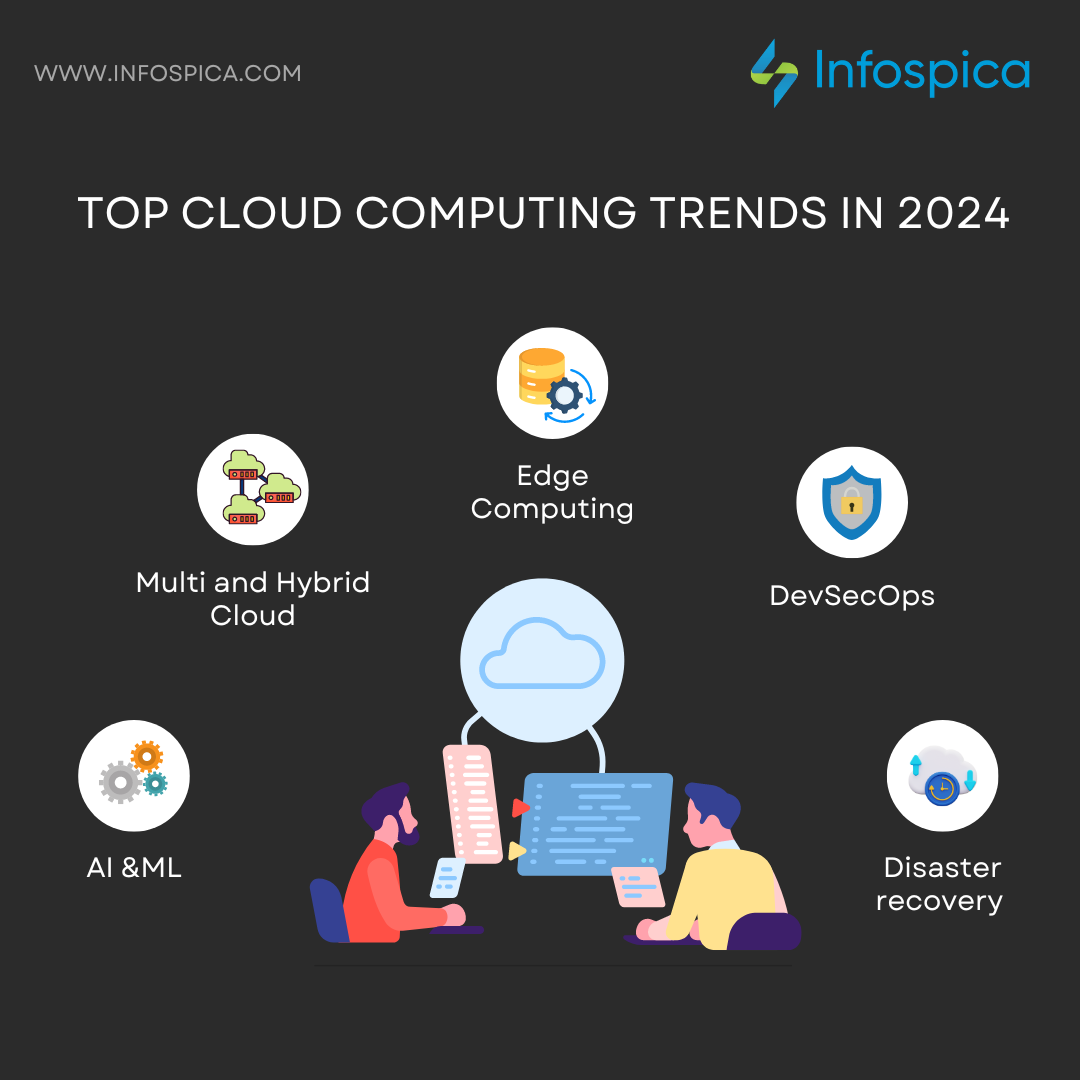Top 5 Cloud Computing Trends in 2024

As we progress through 2024, the landscape of cloud computing continues to evolve at a rapid pace. New technologies and methodologies are emerging, enhancing the capabilities of businesses and transforming how we interact with digital environments. Here are the top five cloud computing trends that are shaping 2024:
1. Artificial Intelligence and Machine Learning Integration
One of the most trending technologies that are closely linked with cloud computing is Artificial Intelligence (AI) and Machine Learning (ML). These technologies are cost-effective as they require significant computational power and storage for data collection and training, which cloud platforms efficiently provide. Major trends in this sector expected to grow in the coming years include self-automation, self-learning, personalized cloud services, enhanced data security, and privacy.
Why It Matters:
Enhanced Analytics: AI and ML provide sophisticated tools for analyzing vast amounts of data, uncovering patterns, and predicting future trends.
Automation: Routine tasks can be automated, leading to increased efficiency and reduced operational costs.
Improved Customer Experience: AI-driven chatbots and recommendation systems can enhance customer interactions and satisfaction.
2. Multi and Hybrid Cloud Deployments
The use of multi-cloud and hybrid cloud solutions is on the rise. Many organizations, such as banks and insurance companies, are leveraging hybrid cloud services that combine both private and public clouds to store their data securely and efficiently.
Why It Matters:
Flexibility: Multi-cloud strategies allow businesses to divide their workloads among multiple cloud service providers, utilizing the strengths of each while maintaining control over their data and resources.
Risk Mitigation: By spreading workloads across multiple clouds, organizations can minimize potential risks and failure points, ensuring greater reliability and continuity.
Cost-Effectiveness: Businesses can choose specific services from particular cloud providers that best meet their requirements, rather than deploying their entire application on a single cloud. This selective approach optimizes costs and resource utilization.
3. Edge Computing
Edge computing is transforming the way data is stored, processed, and analyzed by bringing these functions geographically closer to the source. This means that computation and storage occur near the source sensors and devices, rather than relying solely on centralized data centers.
Why It Matters:
Reduced Latency: By processing data close to its source, edge computing minimizes the time it takes for data to travel, which is crucial for real-time applications.
Enhanced Efficiency: Localized data processing improves overall system efficiency, reducing the load on central servers.
Increased Privacy and Security: Data processed locally is less likely to be intercepted or exposed during transmission, enhancing security and privacy.
High Data Transmission Rate: Proximity to data sources enables faster data transmission rates.
4. DevSecOps
While cloud computing offers numerous benefits for managing data, it also presents several security challenges. Users can face risks such as network invasion, Denial of Service (DoS) attacks, issues in virtualization, and unauthorized use of data. These risks can be effectively minimized with the implementation of DevSecOps.
Why It Matters:
Proactive Security: DevSecOps integrates security measures directly into the development process, ensuring that security is a priority from the start.
Automated Security: It incorporates various processes into its workflow to ensure secure task automation, reducing the likelihood of human error.
Continuous Monitoring: DevSecOps practices include continuous security monitoring and testing throughout the development lifecycle.
5. Disaster recovery
Disaster recovery is essential for restoring critical data and systems following any disaster. Many organizations have suffered significant losses due to unsaved data from server crashes. Cloud computing offers a robust solution by providing backup capabilities to quickly recover from disruptions such as data loss, power outages, natural disasters, cyberattacks, or hardware failures.
Why It Matters:
Business Continuity: Ensures that critical systems and data are available in the event of a disaster, minimizing downtime and maintaining business operations.
Data Protection: Safeguards against data loss by storing backups in the cloud, which can be quickly accessed and restored.
Cost-Effective: Reduces the need for expensive on-premises disaster recovery infrastructure, leveraging the scalability and flexibility of cloud services.
Conclusion
The cloud computing landscape in 2024 is marked by significant advancements and strategic shifts. From the integration of AI and ML to the rise of edge computing and the adoption of DevSecOps, these trends are driving innovation and offering new opportunities for businesses to enhance their operations. As companies continue to navigate this dynamic environment, staying abreast of these trends will be crucial in leveraging the full potential of cloud technologies.